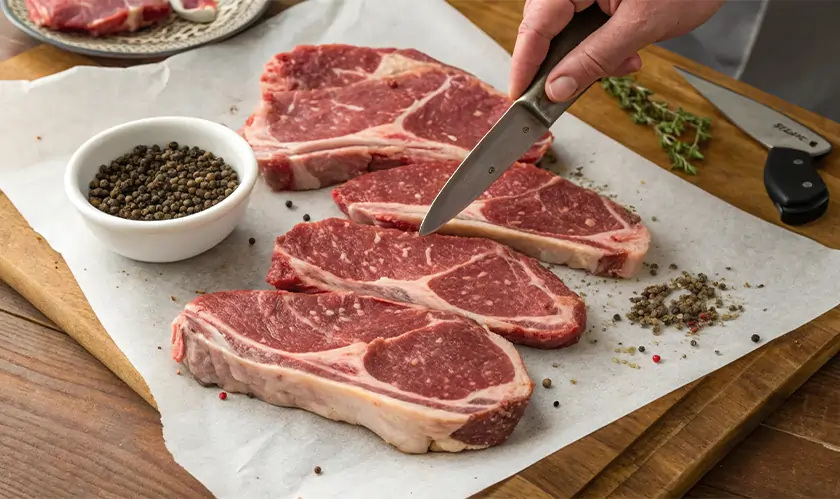Home Industry Food and beverage What Bone-In Actually Does to ...
Food And Beverage

CIO Bulletin
16 May, 2025
Ever wonder why ribs seem juicier when they’re still hugging the bone? There’s something about bone-in cuts that makes a meal feel more satisfying—more primal, even. The flavor runs deeper, the texture hits differently, and the presentation has a rustic kind of beauty that boneless cuts can’t quite match.
These cuts come from specific parts of the animal, each bringing its own mix of fat, muscle, and connective tissue. Cooking them isn’t just about getting dinner on the table—it’s a chance to experiment, slow down, and appreciate how a simple ingredient like bone can shape the whole eating experience.
Bone-in cuts work especially well with a BBQ rub seasoning because the bone slows down heat transfer. This slower cooking helps flavors sink deeper into the meat. The bone itself acts like a flavor channel, allowing the seasoning to go further in. As the meat cooks over time, the dry rub mixes with natural juices, forming a tasty coating.
As the marrow and connective tissue break down, they mix with the spices in a way that boneless cuts can’t match. The result is a deeper, richer taste. To get the most out of it, apply a thick rub and let the meat rest in the fridge overnight before cooking.
Bones change how meat cooks. They hold heat differently, so getting the temperature right takes some care. It's best to place your thermometer near the bone to get a true read. Since bones stay hot longer, they affect the total cooking time. Using a method like two-zone grilling helps you control the heat better, so the meat cooks evenly without drying out on the outside.
It's also important to let the meat rest after cooking. Even after it's off the heat, the inside continues to warm up a little. Giving it 10 to 15 minutes allows juices to spread throughout the cut, which leads to better flavor and tenderness.
Bone-in cuts have noticeable texture differences, especially close to the bone. That area tends to be juicier and firmer. The connective tissue and fat help hold moisture and add to the flavor and feel. It’s especially satisfying for those who like a meatier bite. When paired with sides that cut through that richness, the whole meal becomes more balanced.
Meanwhile, the outer parts of the cut are usually softer and more tender, which contrasts nicely with the firmer bits near the bone. This variety gives your mouth something to explore—a mix of smooth and slightly chewy textures in one bite. Pointing this out to your guests can turn eating into a more interactive and fun experience.
Cooking bone-in meat unlocks flavors that go beyond what marrow provides. As it cooks, fat melts and spreads across the surface of the meat, acting like a natural baste. This keeps the meat moist and adds layers of flavor. It also helps create that crispy, caramelized bark that’s so popular in BBQ.
This fat not only helps keep the meat from drying out, but it also helps the seasoning stick better. The final result is a glossy, tasty crust that smells and looks amazing. You can also try adding wood chips while smoking for an extra smoky depth that brings out even more flavor.
Even though bone-in cuts have a lot to offer, they’re not ideal for every cooking method. Quick techniques like high-heat grilling or pan-searing can cook the outside too fast while the inside stays underdone. The bone changes how heat moves through the meat, so it’s harder to get even doneness with fast cooking. That can make the final dish less enjoyable.
They can also be tricky in big batches. If you’re cooking a lot at once, it’s easy to lose focus on individual pieces. That might mean some are overcooked while others are still raw near the bone. Picking smaller portions and cooking them with more care lets you watch the heat and timing more closely. This usually gives you better results.
Bone-in cuts don’t just cook—they create an experience. The slow release of flavor, the rich textures near the bone, and the crisp edges from rendered fat all come together in a way that boneless cuts rarely match. Think of the satisfaction in that first bite of a smoky, tender rib or the quiet pride of pulling a roast from the grill after hours of care. These cuts ask for patience and reward it with deeper taste and texture. For meals that feel like events—memorable, shared, and full of flavor—bone-in is more than a cooking choice. It’s a ritual worth repeating.







